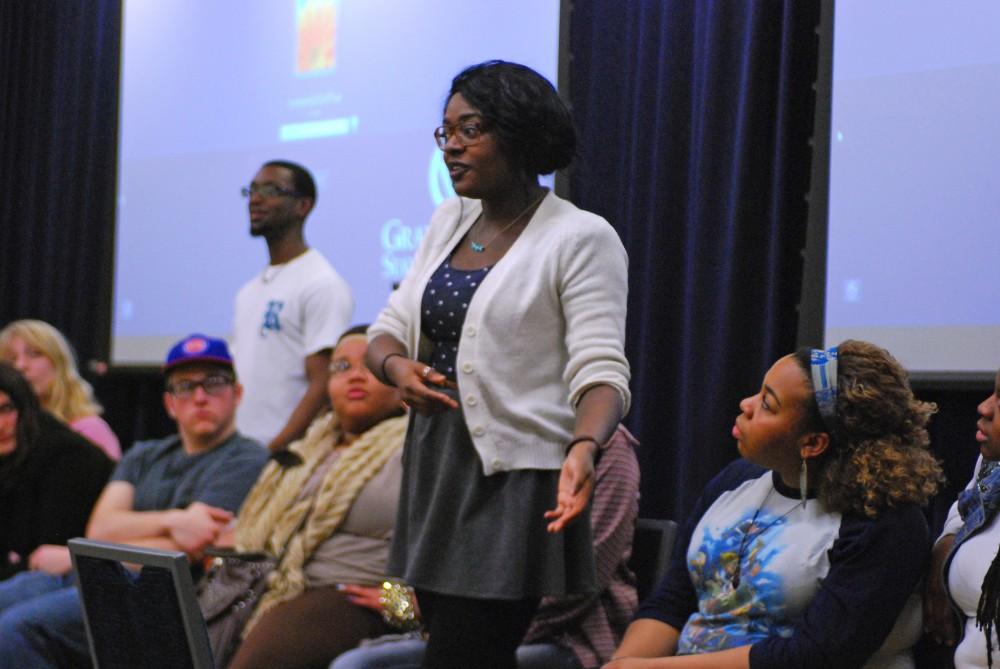Contemporary racism

GVL / Hannah Mico GVSU’s Act on Racism group hosted a discussion panel during the Teach In on Wednesday; they discussed confrontations and situations they had experienced on campus involving racism and prejudice.
Mar 26, 2014
In today’s society, racism and other forms of bias can often go undetected. A Teach-In was held at Grand Valley State University yesterday to raise and answer questions about the issue and to allow students, faculty and staff members to share their ideas and experiences with it.
Presentations, lectures and discussions were hosted throughout the day from 8 a.m. to 10 p.m. in the Mary Idema Pew Library. There were 28 sessions scheduled ranging from discussions about when a joke isn’t funny to the impact of frisk practices.
English professor Kathryn Remlinger and her students from English 392: Language and Power gave the presentation “From Facebook Memes to Immigration Policies: The Everyday Language of Modern Racism.”
The session focused on language and how it can be used to reinforce and redefine racism. Remlinger said racism is something that many people unknowingly take part in during everyday life.
“Linguistic subordination is the root of social prejudice,” she said. “If you want to look at society and see which groups are stigmatized, then just look at what dialects are made fun of or looked at as wrong, incorrect or unintelligible.”
The class used examples including mock Ebonics, mock Spanish, Facebook memes, advertisements, public statements by politicians and comics to reinforce the point that everyday language can hurt and do real damage.
“Rather than examining blatant kinds of racism, such as racial slurs, we need to discuss the more subtle ways that we all participate to reinforce and reproduce racism in our everyday lives,” Remlinger said. “We need to talk about contemporary racism rather than something from the 1950s. Racism isn’t limited to the past.”
Today, racism is still perpetuated in advertisements and schools. During the presentation, students discussed this trend and explained the terms “racilaization” and “othering.”
“‘Racialization’ is the act of putting together a whole group of people into one, confined box or one label,” said Jamie Bott, a student in English 392.
The media is also responsible for perpetuating racism and is a contributor to the idea of “othering,” Remlington said.
“I think a really good example is looking at news broadcasts,” she said. “When there are African Americans being broadcasted, oftentimes there will be subtitles used even when the people being interviewed are perfectly understandable. You don’t see that with whites when they are interviewed on broadcasts.”
There is no law that protects people against racial discrimination from language use. People can be fired for the way they use language, and it can also prevent people from being hired.
“We aim to uncover hegemonic ideologies, ways of thinking and seeing the world that go unchallenged,” Remlinger said. “They seem like common sense or normal. We don’t even notice them because they are part of our world view.”
Some students pointed out that while language can be harmful, it can also be a tool for change and awareness.
“I’d like to show that social media can make our friends more aware of these issues,” said Kathleen Gallagher.
Since social media has become a main mode of communication, Gallagher believes the outlet should be taken advantage of and used as a platform for hard discussions. She ended the talk by asking students to be more aware of what they are posting and saying.

























